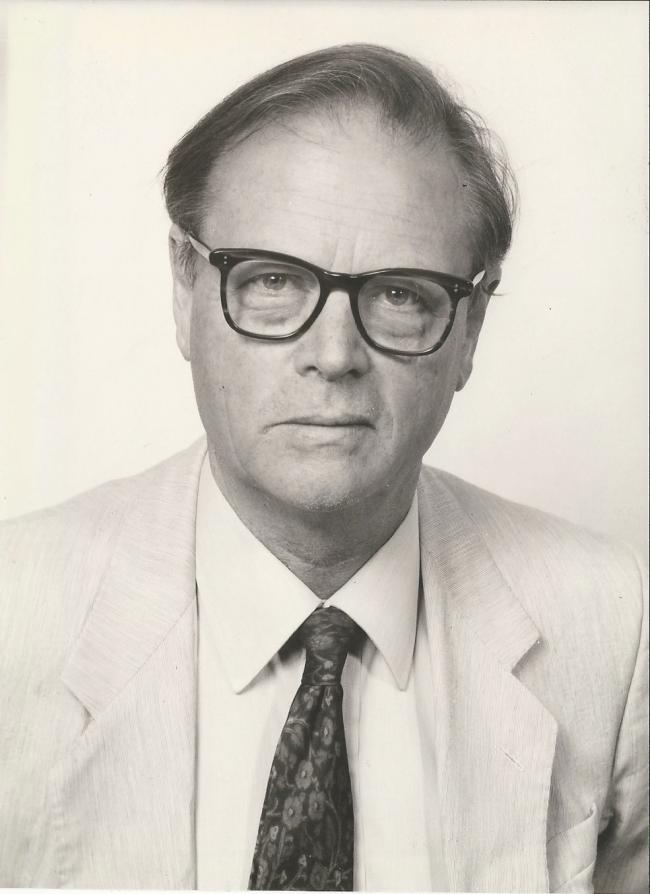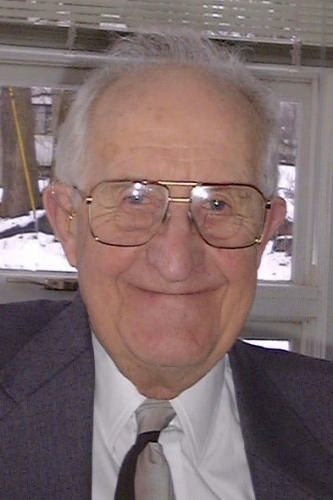It is with regret that ICRU reports the passing of two distinguished radiation scientists, Sir Oliver Scott and Jack Fowler, both former directors of the Gray Laboratory.
Sir Oliver Scott

Sir Oliver Scott of Yews, better known as Oliver, a radiobiologist and philanthropist was the third baronet in a peerage created in 1909 to recognize the business successes of his grandfather. Oliver studied natural sciences at Cambridge and qualified as a radiologist at St Thomas’s Hospital in 1946. While at St Thomas’s he participated in pioneering studies of the uses of hyperbaric oxygen in radiation therapy and throughout his life he maintained a keen interest in research both as a participant, consultant, and philanthropist. In about 1953 the British Empire Cancer Campaign supported by funds provided by Sir Oliver, founded a research laboratory at Mount Vernon Hospital dedicated to radiation research and under the direction of Dr. Harold Gray. Following the death of Harold Gray in 1965 Oliver became director of the Gray Lab until 1969. After his resignation for health reasons he maintained a vital interest in research and served on the Council of the Cancer Research Campaign. In recognition of his efforts he became President of the Oncology Section of the Royal Society of Medicine and was awarded an Honorary Fellowship in the British Institute of Radiology. In addition to his contributions to science and medicine Sir Oliver, supported at all times by his wife, Phoebe, were generous supporters of science and the arts providing both financial support and gifts of lands to various charities and organizations devoted to the arts and music. ICRU is particularly appreciative of support of the Scott Foundation towards the Gray Medal.
Jack Fowler

In 1955 Jack Fowler received his PhD in radiation physics, then spent several years in medical physics before joining the Medical Research Council at Hammersmith Hospital ultimately receiving the title of Professor of Medical Physics. Moving from Hammersmith Hospital Jack assumed the directorship of the Gray Lab a post that he held for almost 20 years. During his tenure at the Gray Lab Jack attracted and fostered a number of leaders in various aspects of radiation science and greatly increased the renown of the laboratory. After his “retirement” in 1988 Jack joined the Department of Human Oncology at the University of Wisconsin where he served two terms, from 1988 until 1994 and from 1999 until 2003. Much of Jack’s work was aimed at bridging the gap between experimental radiobiology and human radiotherapy with special emphasis on the effects of altered fractionation and changing dose rates. He especially fostered the use of the Linear Quadratic (α.β) Model for dose effect predictions leading to the concepts of Biologically Effective Dose (BED) and Equieffective Absorbed Dose (EQD2), currently of widespread use in radiation therapy. This work over the years led to over 500 publications, numerous lectures and book chapters. In addition to his scientific acumen and seminal contributions to radiation biology and radiotherapy Jack will probably best be remembered for this unfailing enthusiasm and especially for his enthusiastic interest in and support of the work of others. Jack’s contributions to radiation science and the development of new generations of researchers have been recognized by the European Society for Radiotherapy and Oncology (ESTRO) and the Radiation Research Society through the provision of awards in his name for young investigators and by the University of Wisconsin through the establishment of a named chair in the department of Human Oncology.

